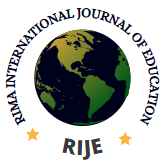Harmonizing Power: Analyzing Asiwaju Tinubu's Campaign Jingle 'Jagaba' by Rarara on Political Mobilization and Voter Engagement in Nigeria’s Electoral Landscape
Helen Johnson Egemba, Samuel Yohanna Davou, and Bitrus Dung Tok
*1&2Departmentof Music, Federal University of Education Pankshin Plateau State, Nigeria Email: juzoamaka5@gmail.com1 & samwatu@hotmail.com2 ORCID: 0009-0009-4626-44002
2Department of Christian Religious Studies, Federal University of Education Pankshin Plateau State, Nigeria Email: tokbitrus@mail.com
Abstract
Since music adapts to every situation as desired by the listener, it is a universal sound without any practical significance in and of itself. The limbic system, a system that is responsible for pressing emotions and managing memory, "lights up" when we hear musical compositions. Modes in humans are brought on by the neurotransmitter dopamine. It is what gives one the goosebumps when they listen to a particularly moving piece of music. Politicians can, however, politically interpret music to some degree. This essay will examine the musical jingle "Jagaba Shine Gaba" by the Hausa musician Dauda Kahutu alias Rarara from a structural and contextual perspective. The research also discusses the importance of music in igniting political movements, particularly during the general election in Nigeria in 2023 that resulted in President Tinubu's election. This essay investigates the campaign jingle employed by Ahmed Bola Tinubu, the front-runner for the All Progressive Party (APC), to win the presidency. This study reveals the underlying meanings and inescapable socio-cultural ramifications of the discourse of the sampled political jingle Jagaba Shine Gaba (Jaba is in Front). It is based on linguistic and literary theoretical perspectives and employs critical discourse analysis and musicology of literature, respectively. Utilising the qualitative analytical approach, the researchers assess the aforementioned jingle based on historical facts and observations. According to the study, political jingles are utilised to improve politicians' personalities and voter acceptability by including a variety of factors such as implicatures, names, lexemes, religious references, evidentiality, and code-switching.
Keywords
Jingle, Dopamine, Politic, Limbic, Analysis, Structural, Contextual
Reference
Altenmüller, E., Kopiez, R., & Grewe, O. (2013). Strong emotions in music: are they an evolutionary adaptation? Sound-perception-performance, 131-156.
Davou, S. Y. (2023). Onwuekwe logical analytical musical approach to Afro-musical studies. The prodigious musicologist: Celebrating Professor Agatha Ijeoma Onwuekwe (UGONABO), 128-142.
Deribe, A. U., Sambo, U., & Babayo Sule, I. S. (2021). Unmasking the Tape of Electoral Fraud in Grassroots Nigeria: Evidence from the Management of the Local Council Elections by the State Independent Electoral Commissions (SIECs). Humanities, 1(1), 25-37.
He, Y. (2023). The Value and Character of Music as a Tool for Political Mobilization. In SHS Web of Conferences (Vol. 167, p. 01007). EDP Sciences.
Levinson, S. C. (1983). Pragmatics. Cambridge University Press.
Murakami, B. (2017). Music as a mnemonic device for verbal recall in healthy older adults (Doctoral dissertation, University of Miami).
Omidiora, O., Ajiboye, E., & Abioye, T. (2020). Political communication and popular literature: An analysis of political jingles in Nigerian electoral discourse. Journal of Creative Communications, 15(2), 194-208. Opeibi, B. O. (2009). Discourse, politics and the 1993 presidential election campaigns in Nigeria. Lagos: Nouvelle Communications.
Peterson, L. E. (2018). A rhetorical analysis of campaign songs in modern elections. Brigham Young University.
Sayin, H. U. (2019). Getting high on dopamine: Neuro scientific aspects of pleasure. SexuS J, 4, 883-906.
Shafron, G. R. (2010). The science and psychology behind music and emotion. Journal of Young Investigators, 20(5), 1-21.
Tanyıldızı, N. İ. (2020). The role of election songs in the leader’s image. İnönü Üniversitesi Kültür ve Sanat Dergisi, 6(1), 70-76.
